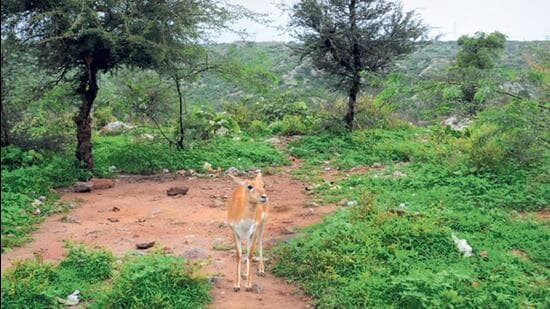1 year on, FSI yet to release the crucial State of Forest report
New Delhi
Last year, 11 retired government officials, including some from the forest and environment departments and two environmental activists challenged the new amendment in the Supreme Court. (HT PHOTO)
The release of the State of Forest report by the Forest Survey of India has been delayed by more than a year now. The last such report, which is supposed to be released biennially, came out in 2021.
There is speculation that the report will have to factor in certain provisions under the Forest (Conservation) Amendment Act of 2023 although Forest Survey of India officials maintain that this isn’t the case and that the collection of information took time.
“We want to give information about forest cover in all newly formed districts. Getting boundaries of these districts took some time. The report will be released soon. The report doesn’t need to factor the new provisions because the mandate is different,” a senior official of Forest Survey of India said on condition of anonymity.
The ministry of environment, forests and climate change did not respond to HT’s queries on when the report would be released, and the causes for the delay.
The FC Amendment Act or the Van (Sanrakshan Evam Samvardhan) Adhiniyam 2023 which was passed last year exempts unrecorded deemed forests, paving way for their diversion for infrastructure and other projects.
Last year, 11 retired government officials, including some from the forest and environment departments and two environmental activists challenged the new amendment in the Supreme Court. The apex court gave an interim order on February 19 upholding the order of the 1996 Godavarman judgement which defined forests as per the dictionary meaning of the word irrespective of ownership.
Experts said the State of the Forest reports need to give accurate details of “unclassed” or “deemed” forests in each district as per the state expert committee reports, something which has not been done.
The Supreme Court in its December 12, 1996 order in TN Godavarman Vs Union of India matter directed that each state government constitute an expert committee within a month to identify areas which are forests as per the dictionary meaning, irrespective of whether they are so notified, recognised or classified under any law, and irrespective of their ownership.
While hearing the application of retired civil servants against the new amendment, the SC again on February 19 this year asked the Union government to obtain the SEC reports prepared by the states and upload them on the MoEFCC website. The union environment ministry has uploaded the state expert committee reports on the Parivesh portal of the MoEFCC website.
“Deemed forests identified by state expert committees should be reflected in the State of Forest report. While the SEC reports are flawed they also do not have any information on the on-ground identification of unclassed forests. We have also found several discrepancies in the data on unclassed forests in the FSI reports with area changing in different years for different states. This reflects that unclassed or deemed forests haven’t been mapped properly. For example, Odisha showed 16282 sq km as unclassed forests till their 2015 report, but it suddenly plummeted to 22 sq km in the FSI report of 2017 for which no explanation has been offered” said Prakriti Srivastava, retired IFS officer who served as the former principal chief conservator of forests (PCCF), Kerala and is one of the petitioners in the ongoing SC case.
Further, the Supreme Court in its 2011 judgement on Lafarge mining limestone in Meghalaya , as a follow-up to the order of the 1996 Godavarman judgement ordered that the Union environment ministry create and update a GIS-based decision support database containing district-wise details of the location and boundary of (i) each plot of land that may be defined as forest for the purpose of the Forest (Conservation) Act, 1980; (ii) the core, buffer and eco-sensitive zone of the protected areas constituted as per the provisions of the Wildlife (Protection) Act, 1972; (iii) the important migratory corridors for wildlife; and (iv) the forest land diverted for non-forest purpose in the past in the district.
The Supreme Court also directed that the Survey of India toposheets (topographic sheets) be prepared in digital format. The forest cover maps prepared by the Forest Survey of India for State of Forest Reports and the conditions stipulated in the approvals accorded under the Forest (Conservations) Act, 1980 for each case of diversion of forest land in the district would also be part of the proposed decision support database, SC ordered.
Based on the response to information sought under RTI, Srivastava said: “The ministry which includes the FSI have not obeyed the Lafarge order of SC. All forests should have been identified in the field by the state expert committees as well as by the ministry, FSI and states as per the Lafarge order. There should have been a GIS survey and ground truthing. The data should obviously reflect in FSI reports which has not happened.”
As per the Forest Survey of India 2021 report, 1,97,159 sq km of forests were outside recorded forest areas. Much of this is unclassed or deemed forests as per experts. Out of that 12,037 sqkm was in the “very dense” category and 1,17,796 sqkm was in “open forest” (not dense) category.
India’s total forest cover as per the report was 7,13, 789 sq km or 21.17% of total geographical area.
Images are for reference only.Images and contents gathered automatic from google or 3rd party sources.All rights on the images and contents are with their legal original owners.


Comments are closed, but trackbacks and pingbacks are open.